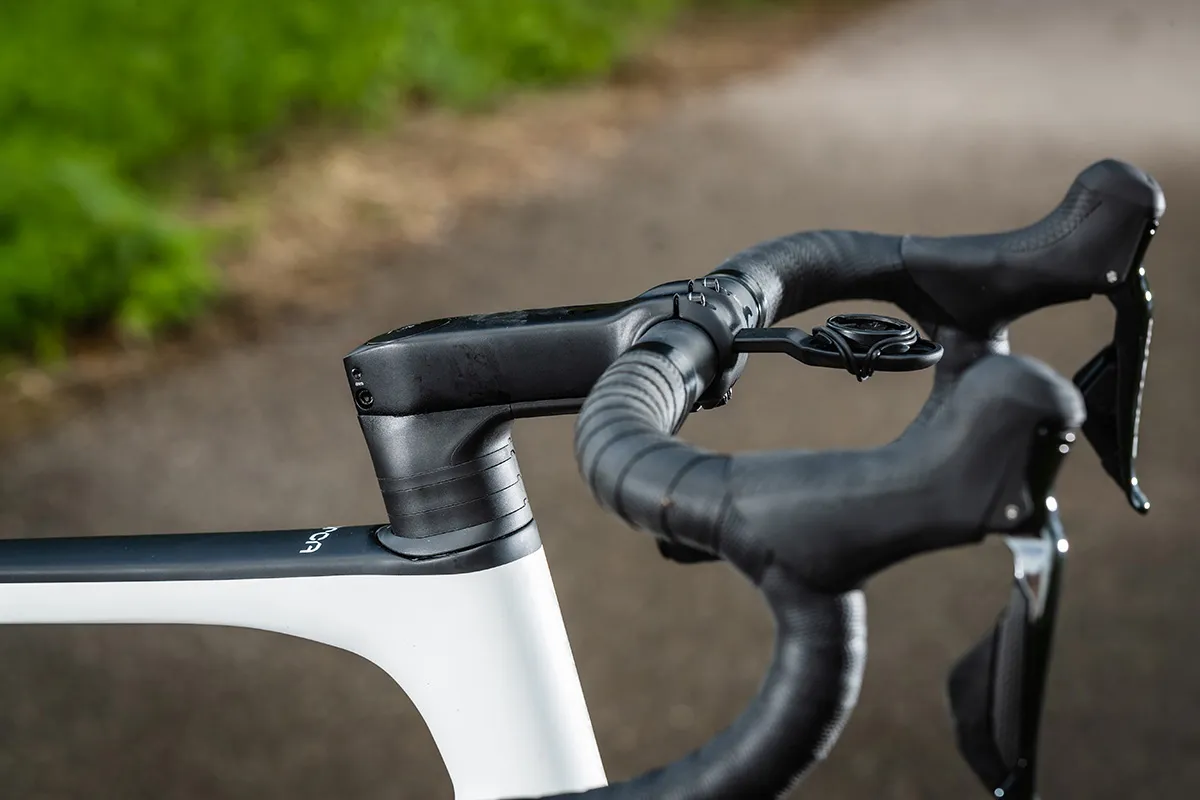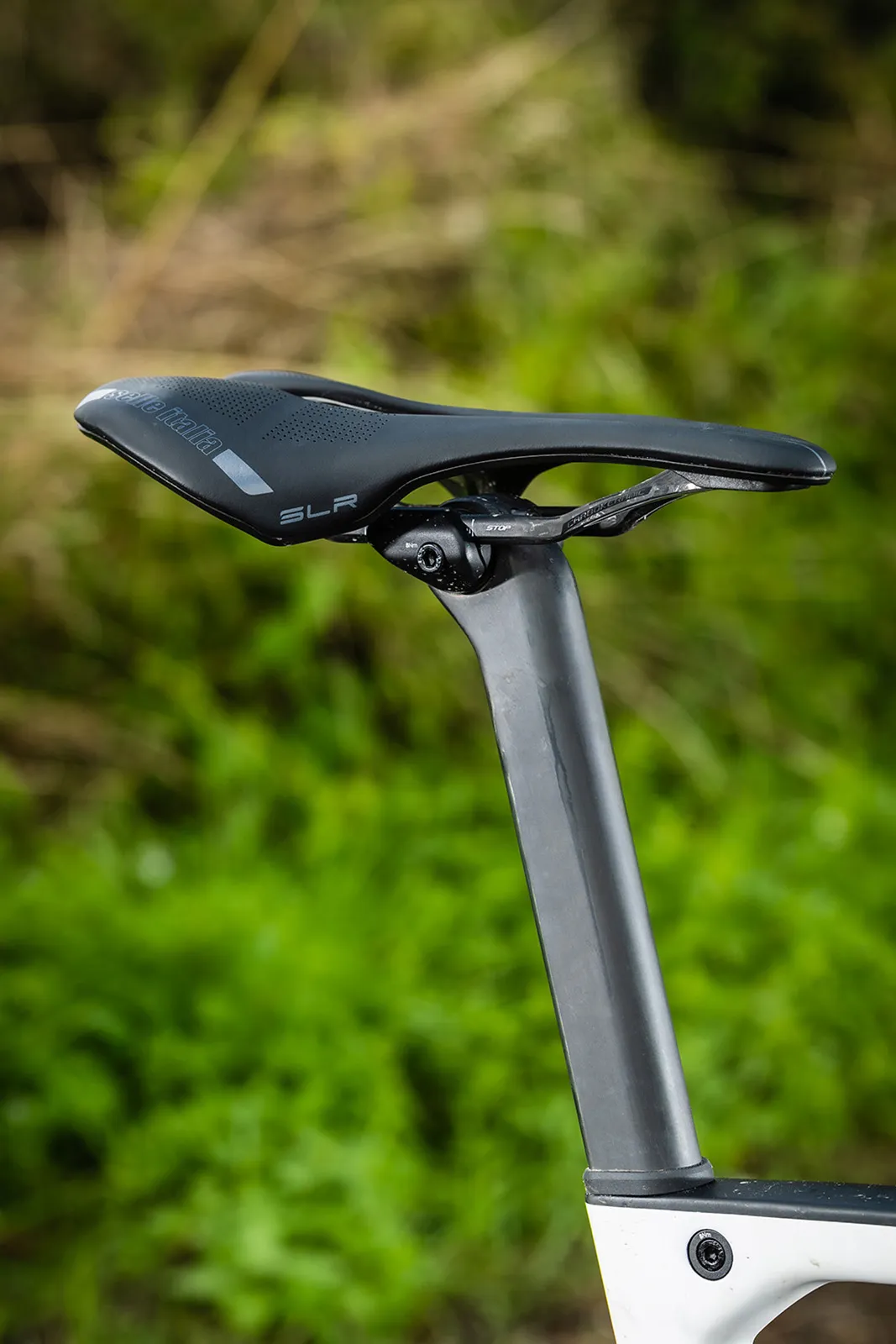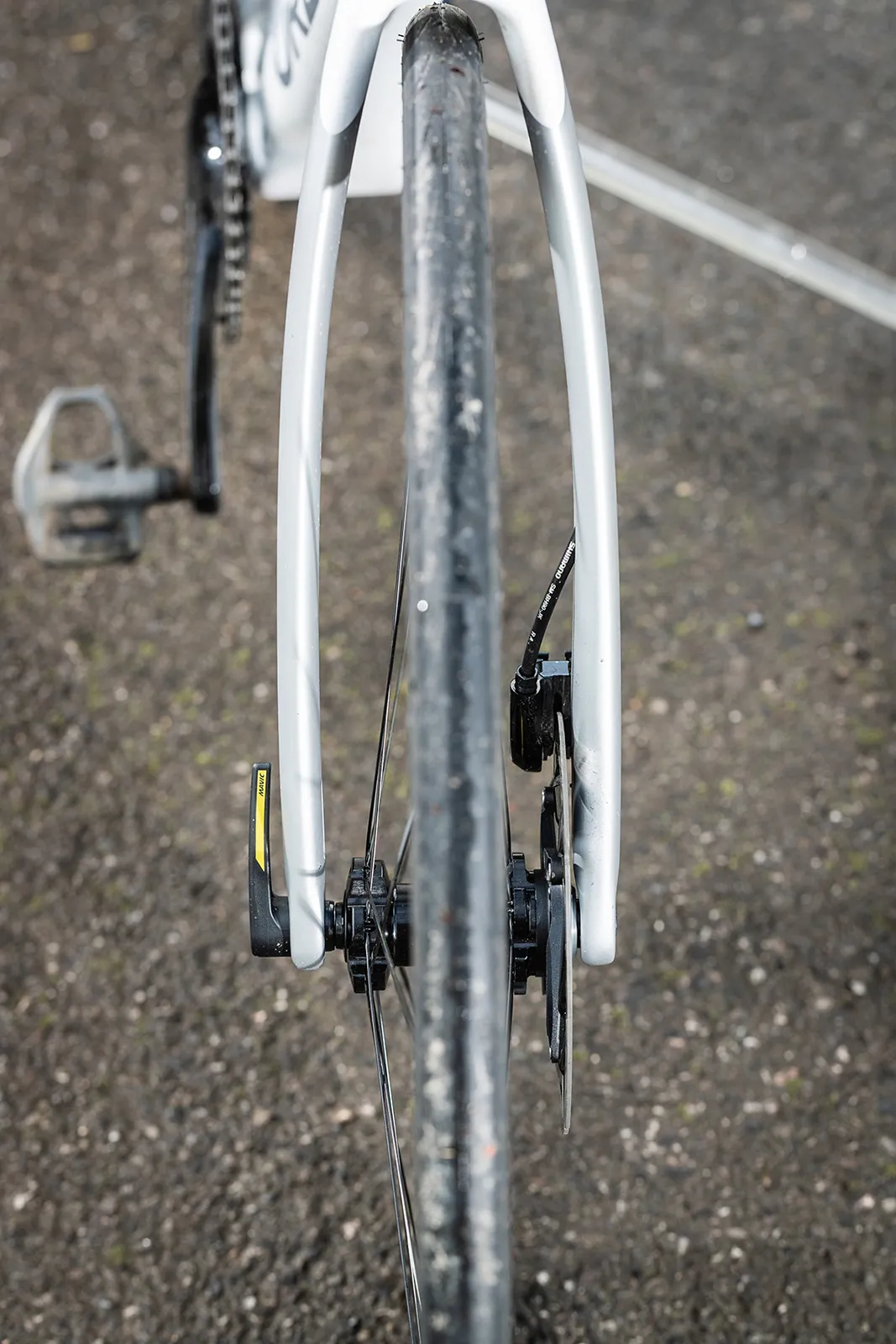Orbea's new aero and lightweight race machine, the Orca OMX, is a big departure from Orbea's other lightweight, the Orca OMR.
Out go the traditional two-triangle frame shape, slender rounds tubes and rim braked options in favour of aero-optimised tube profiles, dropped rear stays, integrated features throughout and disc-brake only options.
- Orbea joins the dropped stay mainstream with new disc-only Orca OMX
- Eurobike 2019: all our coverage from the biggest bike show on Earth
What hasn’t been compromised is the weight. At just 833g for the frame and 370g for the fork (claimed weights) the basis of the OMX is a light one.
My complete 57cm test bike weighed in at 7.5kg with Shimano Dura-Ace Di2, carbon Mavic wheels and (mostly own-brand) carbon components.
The OMX does look at first glance very similar to a raft of new bikes for 2020; were talking Cannondale SuperSix Evo, BMC Teammachine, Specialized Tarmac and Focus Izalco Max to name a few.
The OMX has a few features that set it apart though, such as the impressive way the Orbea has achieved its clean, integrated lines with the OS ICR stem.
The OS ICR stem takes the complex problem of integrating cables and hydraulic hoses internally through the front end of the bike and creates a solution that not only looks neat but is also relatively simple to put together, compared to some.
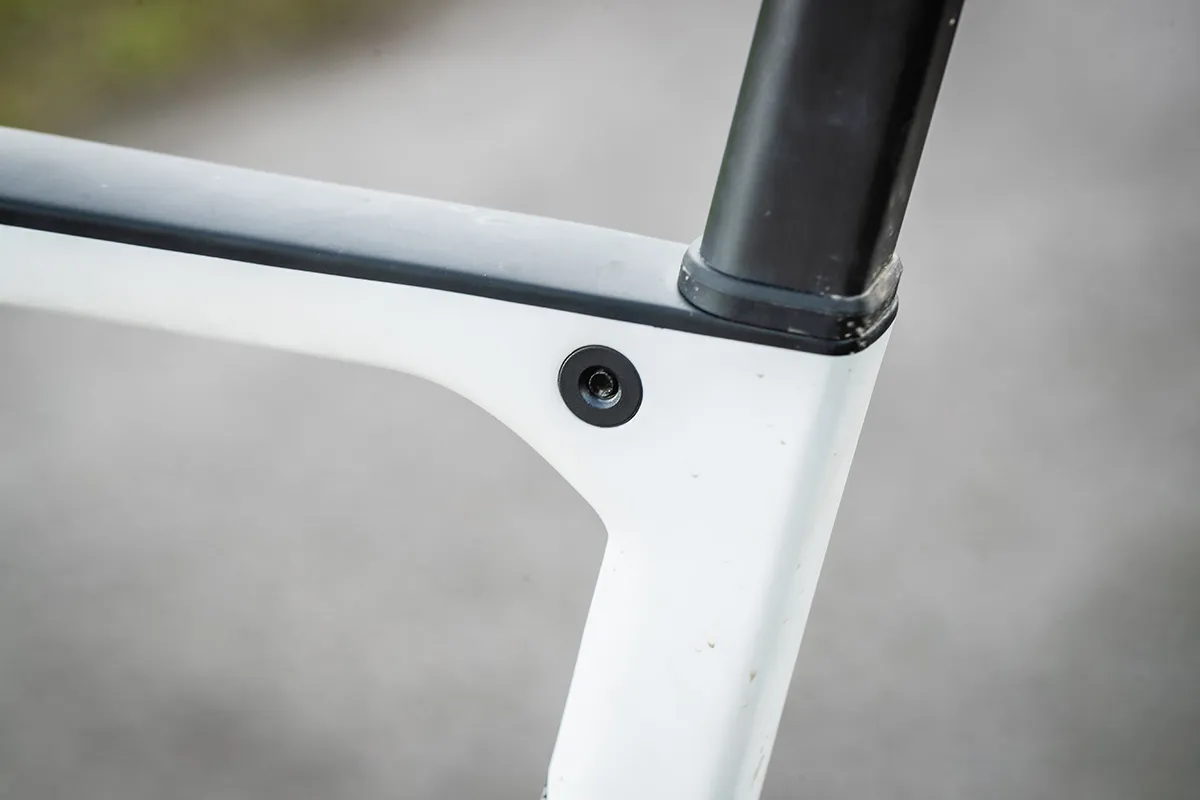
The seat clamp is another smart piece of design. Rather than routing the bolt either from the top or underneath — which makes it fiddly to get a torque wrench in place, and I wouldn’t adjust or clamp up a seatpost without a torque wrench — Orbea has simply put the bolt through the junction between top and seat tube, making it easy to access and simple to use.
Orbea has also considered that most riders cycle on different qualities of road surface and have different needs, so has been generous with tyre clearance. This OMX comes with 25mm tyres (set up tubeless) and can handle up to a 32mm, which opens up plenty of options for this racing lightweight.
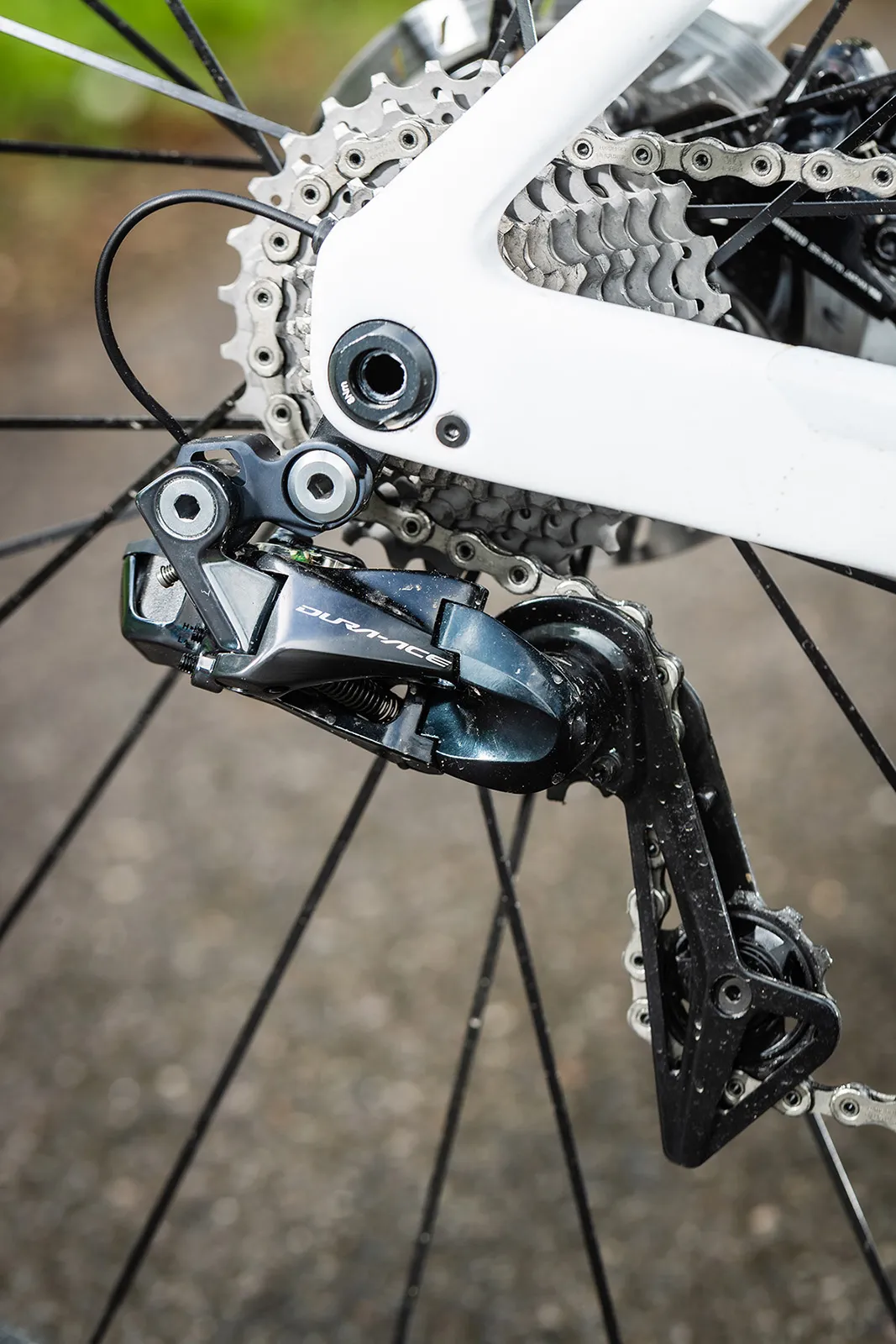
On the road the OMX impresses. The light weight of the bike translates into a flighty ride, and the wide 11-30t cassette gives a generous amount of range on climbs with the bike revelling in steep slopes, positively encouraging you to get out of the saddle and spin.
The Di2 drivetrain is as accurate as ever and, when the road turned back downwards, I was glad that Orbea had smartly specced a 160mm rotor on the front and a 140mm on the rear — it’s the ideal combination for bigger sizes and my preferred option.

The OMX has handling chops for days. It’s a close match for Cannondale’s sublime SuperSix Evo (and its cheaper stablemate the CAAD13) though.
The bike blends a snap in its steering response with resolute stiffness when you're sprinting, but none of this comes at the expense of ride quality.
Yes, the OMX is firmer than an endurance bike such as Giant’s Defy or Specialized Roubaix (both of which have a similar frame shape), but that firmness doesn’t result in discomfort.
The OMX merely communicates much more of the road surface, which gave me confidence, especially on descents, to feel where the limit of the bike’s traction lay.
Overall, the OMX is a stunning machine; it's light, fast, has sharp handling and is firm yet compliantly comfortable. It's everything a modern superbike should be, and with the well thought out details it’s also one of the easiest superbikes to live with.
Of course, as with all of Orbea's range, you can opt for custom colours and component choices using its MyO options.

Product
| Brand | Orbea |
| Price | €8999.00, £7899.00, $9299.00 |
| Weight | 7.50kg |
Features
| Fork | Carbon |
| Stem | Orbea OS ICR |
| Frame | Carbon |
| Tyres | Mavic Yksion Pro UST 25c |
| Cranks | Shimano Dura-Ace Di2 50/34 |
| Saddle | Selle Italia SLR Boost carbokeramik |
| Wheels | Mavic Cosmic Pro Carbon SL UST |
| Shifter | Shimano Dura-Ace Di2 |
| Cassette | Shimano Dura-Ace Di2 11-30 |
| Handlebar | Orbea OS ICR carbon |
| Rear derailleur | Shimano Dura-Ace Di2 |


